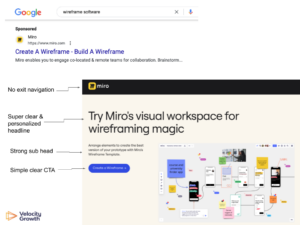Ways To Repurpose Your Content
Repurposing content is a great way to get more mileage out of what you’ve already written. Instead of writing new content, you can instead take the same material and turn it into a variety of different formats. This is a fantastic strategy for several reasons. First, it helps you reach people in different ways. If you have an email list and a blog, repurposed content can help you to connect with people in both places. Repurposing also saves you time as you don’t have to be continuously developing new content ideas specifically for your different communication channels. Instead, you can for example, just tweak an existing article or create a new piece of content focused on the same topic. In this blog, I’ll talk about how to repurpose your content to maximise its value.
Though first, and before we get into how to repurpose your content, let’s talk about why you should. The main question you should ask is, ‘do I need to repost my content?’ If you want to reach more people, reposting is a good idea. If you already have a lot of traffic, it might not be necessary.
If you decide to repurpose, the most important thing to keep in mind is your audience. No matter what format you decide to repurpose your content in, make sure you’re going to reach your target audience and that you’re repurposing your content in a way that works for the platform, or format you’re using e.g., Facebook, newsletter, ezine, ebook.
Here’s a list of the most ways to do this:
- Via social media
The quickest and easiest way to repurpose your content is to share it on your social media channels. If you choose to share it on social media, make sure you’re taking advantage of the features the platform offers. For example, if you’re reposting on Facebook, consider creating an image post instead of a link post. On Facebook, image posts have higher engagement rates than link posts. If you’re posting on Twitter, craft a short tweet instead of a long link post. The same is true for Instagram and other platforms.
- Recirculating your content (via email)
You can also repurpose via email. This is a great way to get your content in front of people who don’t follow you on social media. While your open rates will be lower than they would be if you were sharing via social media, it’s still a very useful way to engage people and if done in parallel with using social media, then you’re additionally maximising the opportunity.
- Repurposing on your website
You can also repurpose content by placing it on your website or using it in a blog. This works especially well if you have a relevant blog topic or ebook you want to direct people to. A great way to do this is to create an “opt-in” page that offers something valuable in exchange for the visitor’s email address. When visitor’s opt-in and go through the process, they’re taken to a landing page with a relevant ebook or a product with an offer.
There’s no hard and fast rule on how many times you can repurpose content, but in general, if you can, you should use your content multiple times and in a variety of formats to maximise its value. For example, if you have a blog post, perhaps you can get several social media posts from this one blog post, each of which might emphasise a specific key point within the piece. By doing this, you’re increasing the likelihood of your blog, that you’ve worked so hard to develop, being noticed by your audience.
How often people repurpose content depends on the social platform. On LinkedIn, for example, you’ll see a lot of repurposed content because LinkedIn users are always looking for content that’s relevant to their business or industry. On Facebook, it’s a little less common because people are more likely to share photos and videos than they are to share blog posts or other types of written content. On Twitter, it’s much less common than on other platforms, but it does happen. On each platform, you’ll see a different frequency of reposting.
If you notice that your content is not being shared, you need to first, take a look at the content itself. Is it relevant to your audience? Is it interesting? Does it provide value? If yes, then ask yourself this question, ‘What could I do to make this more shareable?’ If you can’t think of anything, look at the headline. Is it compelling? Does it compel people to want to share it? Can you change the wording or message to make it more sharable? Next, look at the post itself. Does it have an image attached to it? Is the image relevant and appealing to your audience? Does it contain a compelling call-to-action (CTA)? Can you add a CTA or change the wording on the existing CTA to make it more relevant and compelling? Remember that the key to successfully repurposing content is to make sure that the content is relevant and interesting to your audience.
You can repurpose content in a whole raft of ways. Apart from the options mentioned, you could repurpose it in a webinar, a YouTube post, or a training course. How you use your content is directly related to the results you want to achieve and the audience you’re targeting. Whatever you do, be sure to add value, so you’re not just repurposing for the sake of it. If the content isn’t relevant or interesting to your audience, then don’t repost it. There’s no reason to share something that isn’t valuable to your audience. Think about your content from the perspective of your audience, and through the lens of what adds value? what answers questions, signposts, or supports? Be known as a go-to trusted source of information.
Now go forth and repurpose, making your content work harder for you!

Craig Zingerline is a 6 time founder who has helped dozens of companies scale their growth. Prior to Velocity Growth, Craig was the Chief Product Officer @ Sandboxx, Head of Growth at Upside Travel, CEO of Votion, Head of Growth at Red Tricycle, and VP at New Signature. In addition to in-house roles, Craig has advised and consulted with dozens of high growth startups (4 exits). He’s an award winning product strategist who has mentored hundreds of founders on growth, marketing, and product management.






